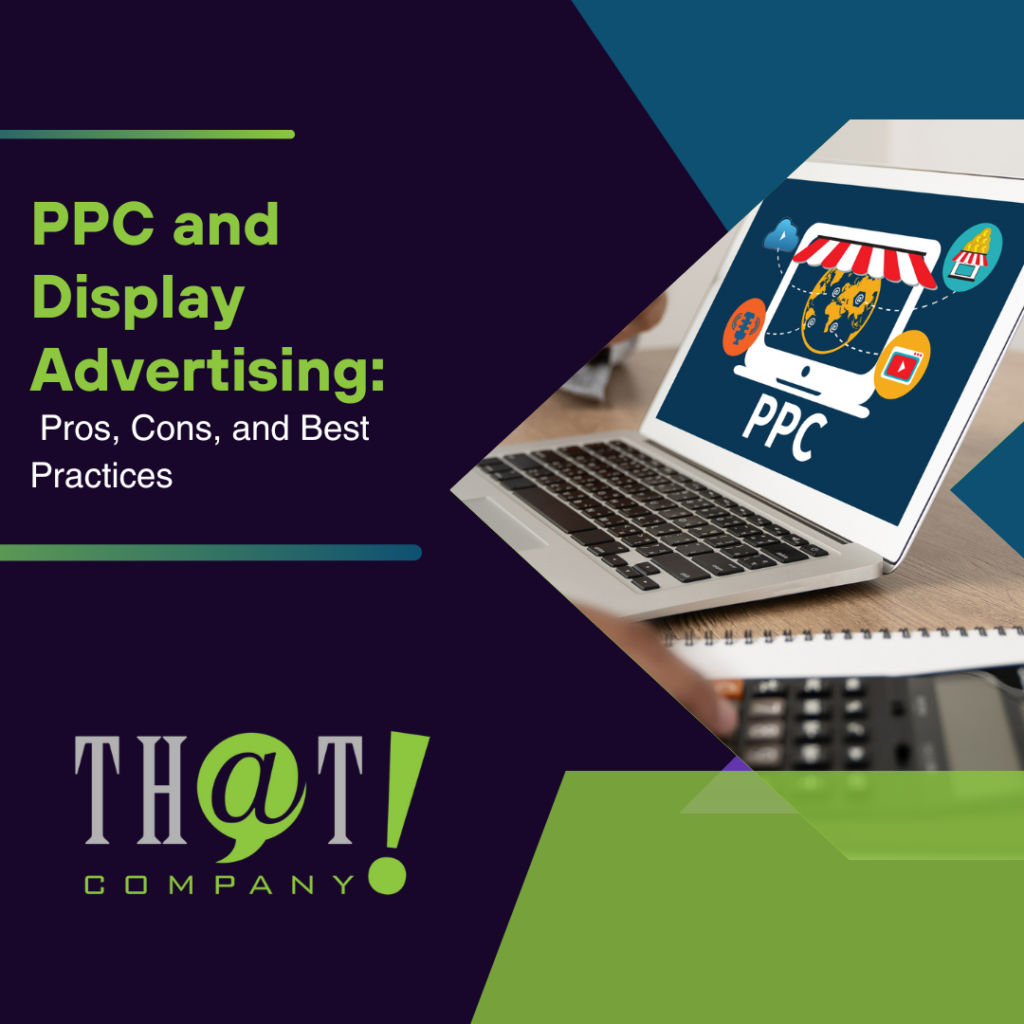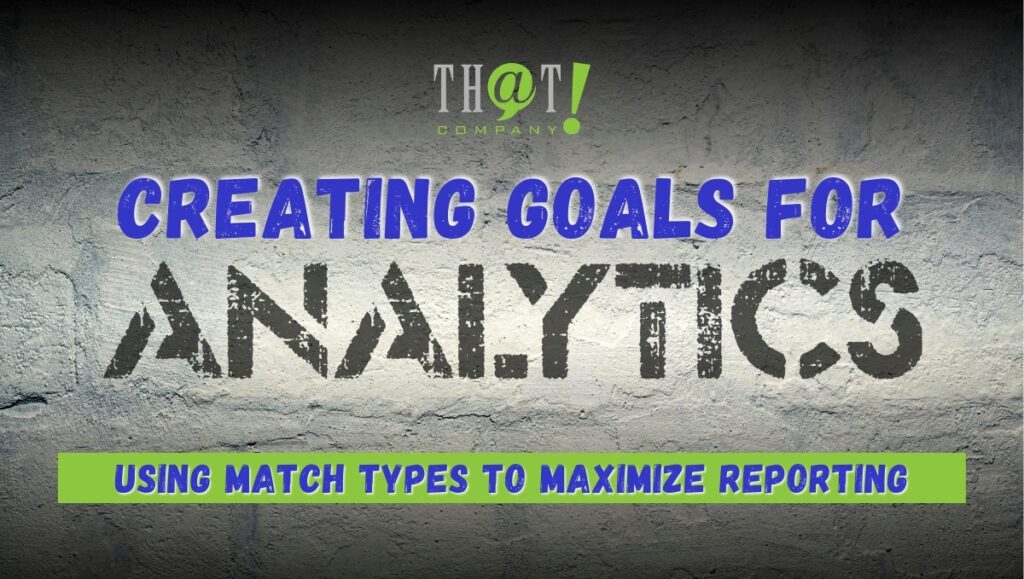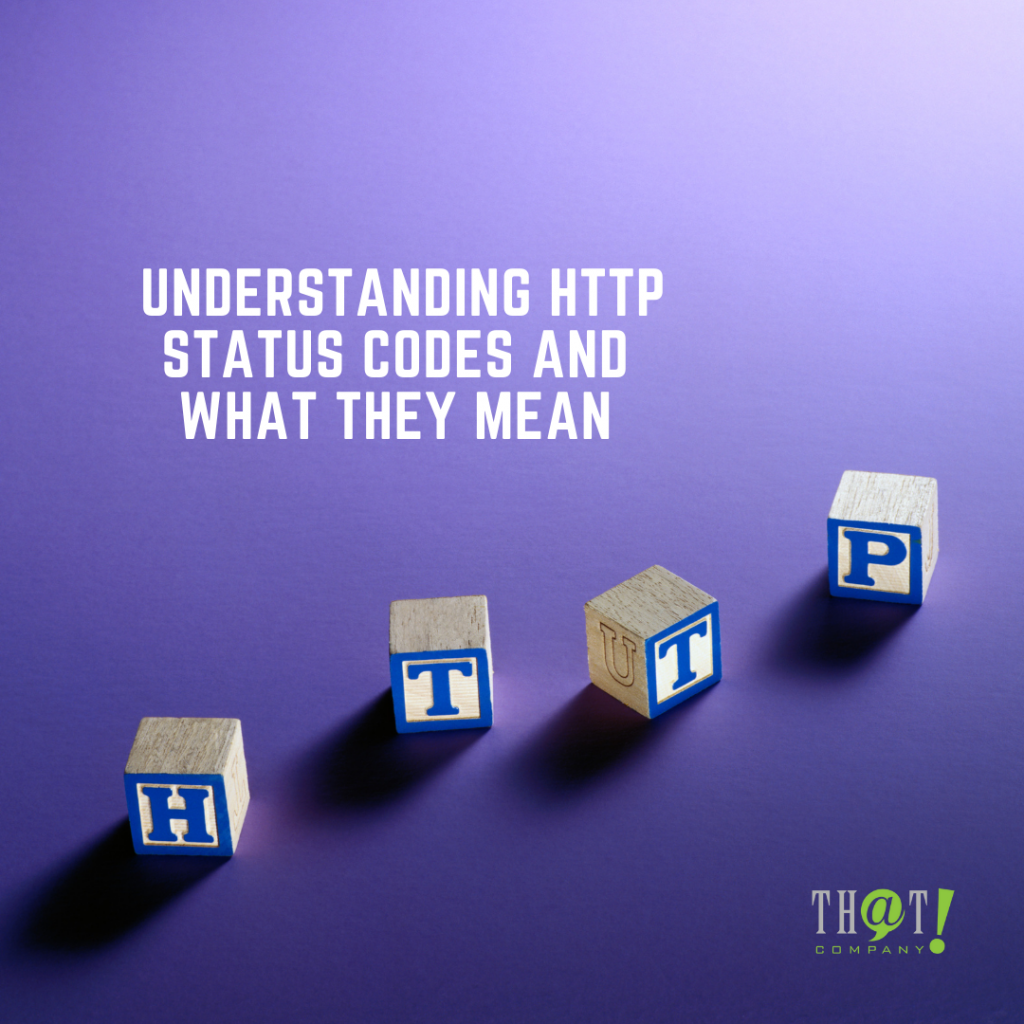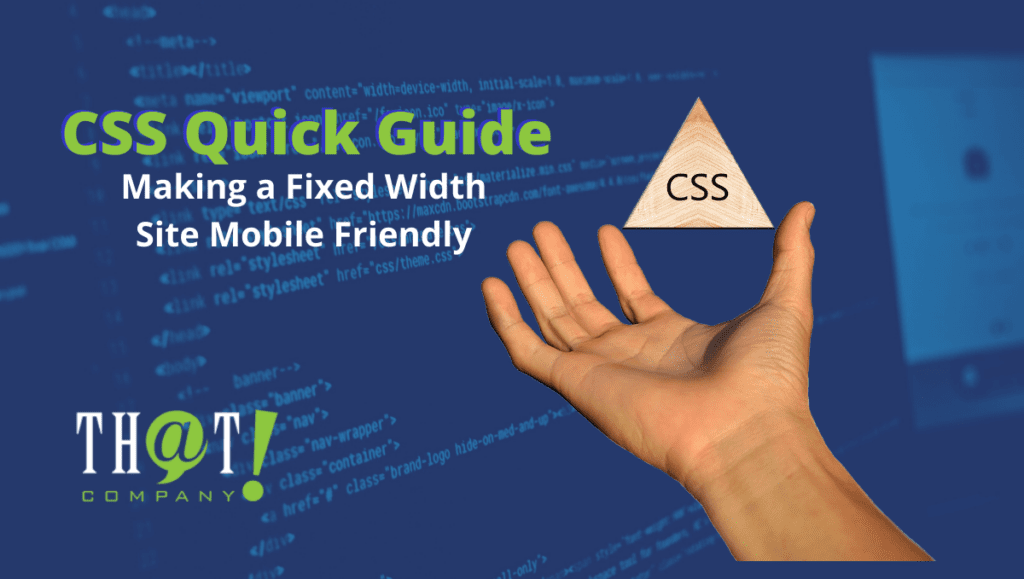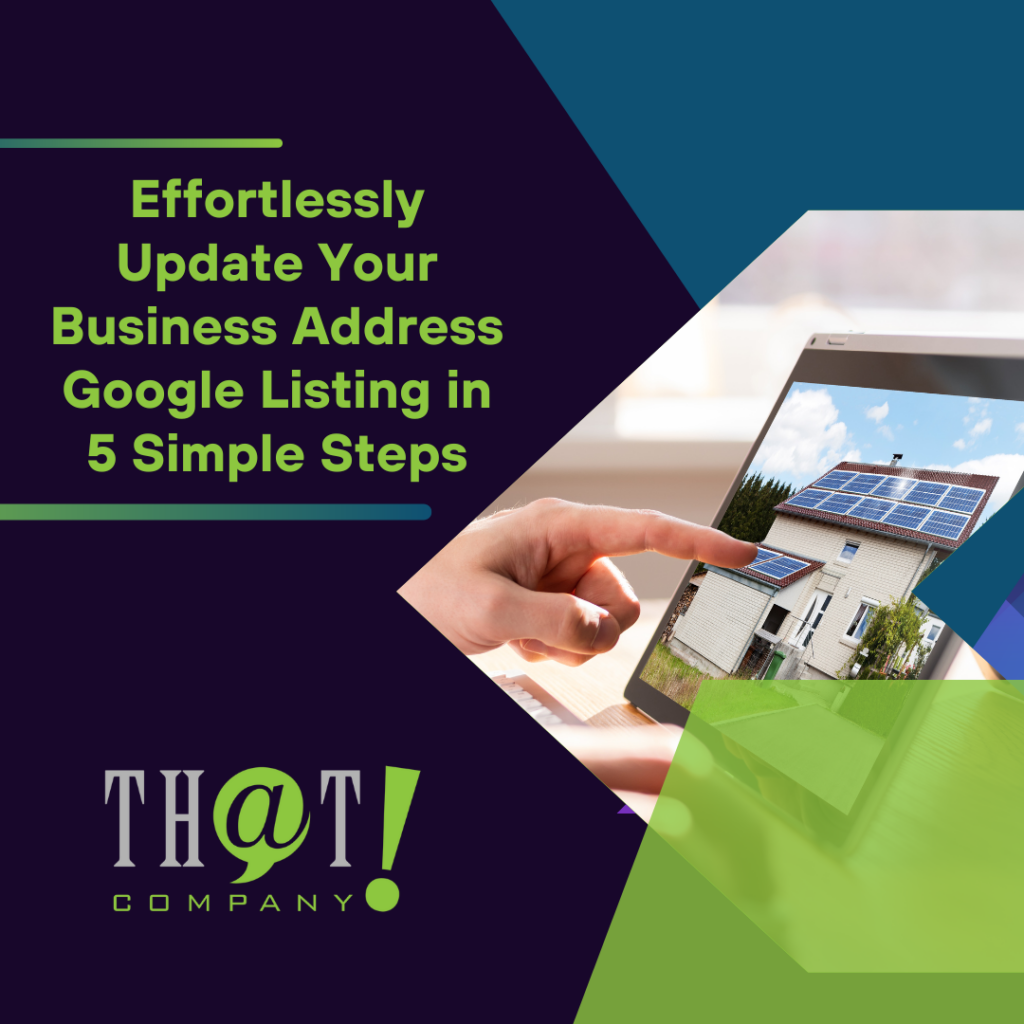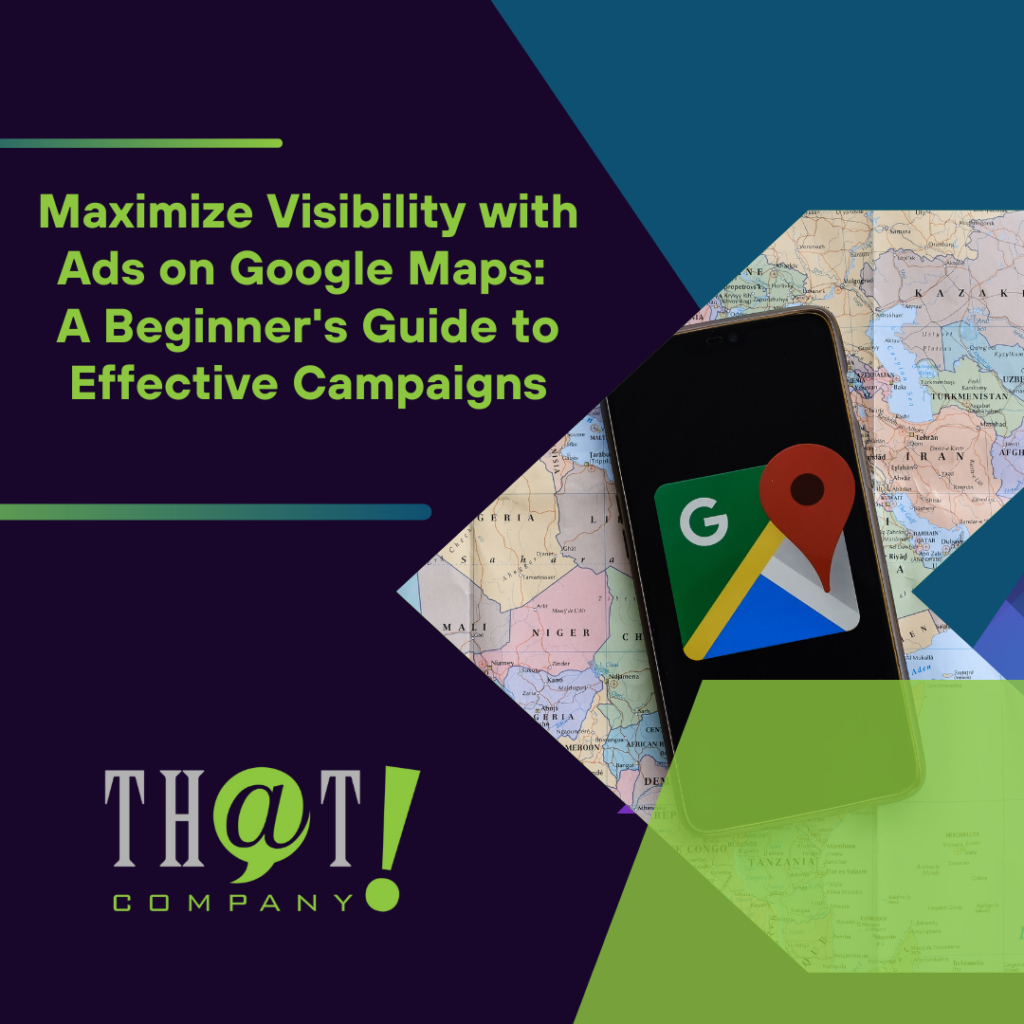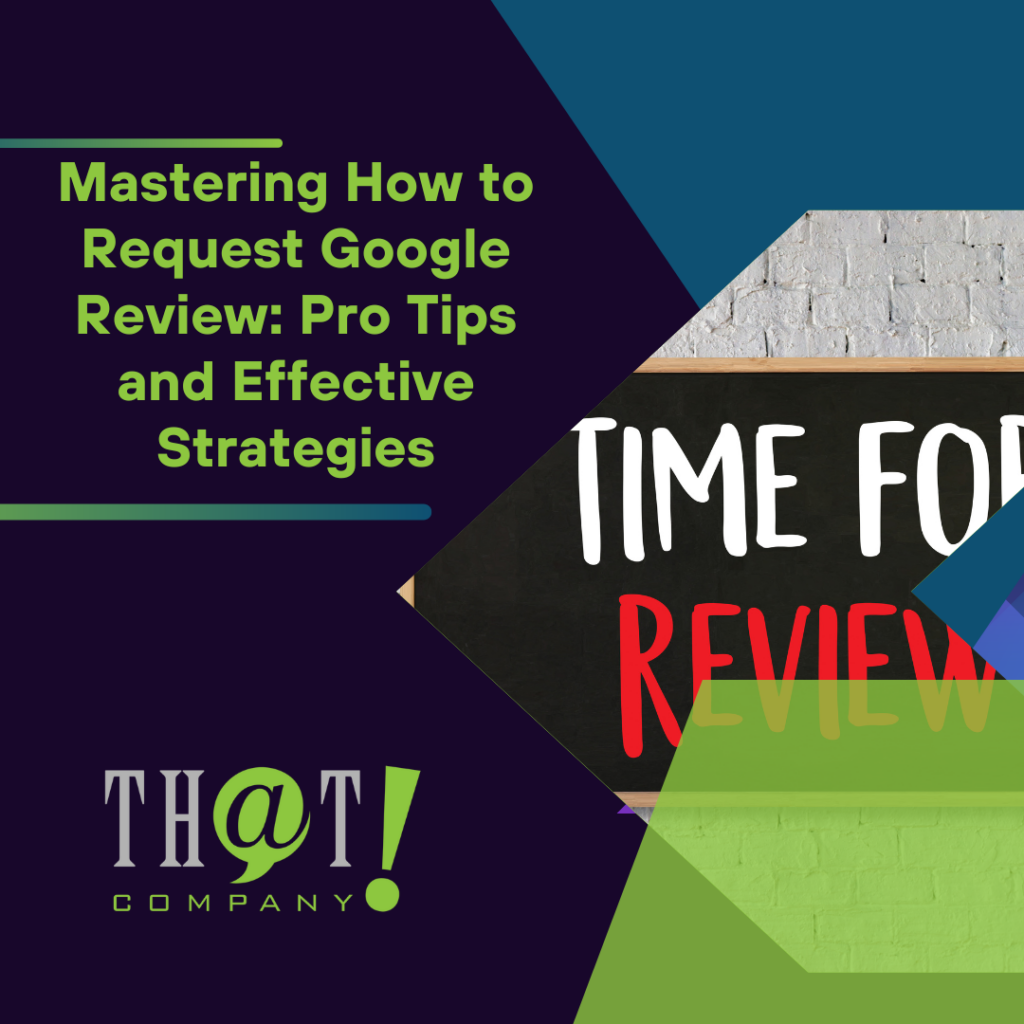
Curious about how PPC and display advertising can enhance your marketing strategy? PPC (pay-per-click) advertising targets users searching for specific products or services for quick results. Display advertising builds long-term brand recognition with engaging visuals. This article explores the pros, cons, and best practices of both methods to help you choose the right strategy for your business goals.
Main Insights
- PPC advertising focuses on immediate conversions through keyword targeting, while display advertising aims for long-term brand recognition using visually engaging content.
- Effective campaigns are driven by aligning advertising goals with the right strategy: PPC for short-term results and display ads for building lasting brand visibility.
- Measuring performance through key metrics and optimizing strategies based on data insights is crucial for maximizing ROI in both PPC and display advertising.

Understanding PPC and Display Advertising
PPC and display advertising are fundamental components of paid advertising, each with its unique strengths and applications. While PPC advertising focuses on immediate conversions by targeting users actively searching for specific services or products, display advertising emphasizes long-term brand recognition through visually engaging content.
Both methods play a crucial role in enhancing website traffic and brand awareness.
What is PPC Advertising?
PPC advertising, or pay-per-click advertising, is a model where advertisers pay for each click on their ads. This method allows businesses to bid on keywords related to their products or services, enabling their ads to appear in search engine results when potential customers search for those terms. The payment structure is straightforward: advertisers only pay when a user clicks on their ad, making it a performance-based model that can lead to higher ROI. This is especially effective in search engine marketing (SEM), where paid search, paid search advertising, and PPC ads target users based on specific search intents.
The competitive nature of PPC advertising means that costs can escalate with higher competition for popular keywords. However, the ability to generate quick leads and drive traffic to websites makes PPC an attractive option for businesses looking for immediate results.
Successful PPC campaigns hinge on identifying the right keywords and crafting compelling ad copy that resonates with the target audience’s intent.
What is Display Advertising?
Display advertising is characterized by its visual appeal, using graphical ads to promote brand recognition across various websites and apps. These ads, often in the form of banners, can be likened to online billboards, capturing attention through striking visuals and engaging content. The primary goal of display advertising is to build long-term brand awareness, making it a vital tool for businesses looking to establish a lasting presence.
Unlike PPC, which targets users based on search intent, display ads are shown to users based on their demographics, interests, and online behavior. This broader approach allows businesses to reach a wider audience, enhancing brand recall and engagement.
Display ads can appear in various formats and placements, from the top of web pages to within email newsletters, ensuring maximum visibility.

Key Differences Between PPC and Display Ads
When choosing between PPC and display advertising, understanding their key differences is essential. These differences primarily lie in cost structures, targeting methods, and usage scenarios, each influencing how businesses can best leverage these advertising strategies to achieve their goals.
Cost Structures
The cost structures of PPC and display advertising are fundamentally different. PPC operates on a pay-per-click basis, meaning advertisers are charged each time a user clicks on their ad. This model can lead to higher costs per click, especially for competitive keywords, but it ensures that ad spend is directly tied to user engagement.
On the other hand, display advertising typically follows a cost-per-impression model, where advertisers pay based on the number of times their ad is shown, regardless of user interaction. This can be more cost-effective for reaching a broad audience but may not directly translate to immediate engagement.
Factors such as competition and keyword relevance significantly impact the costs and performance of PPC campaigns. High competition for popular keywords can drive up costs, making it crucial for businesses to carefully manage their bidding strategies and budget allocation to maximize ROI.
Targeting Methods
PPC advertising relies heavily on keyword targeting, aligning ads with specific search terms that users input into search engines. This method effectively captures potential customers who are actively searching for related products or services. By focusing on user intent, PPC ads can drive highly relevant traffic and generate immediate leads. Demographic factors and audience segmentation further enhance PPC targeting, allowing advertisers to tailor their ads to specific audience segments.
In contrast, display advertising targets users based on their digital footprint, including interests and browsing behavior. Platforms like Facebook, Instagram, and Twitter leverage demographic and interest data to deliver highly targeted display ads. This approach enables businesses to engage users during casual browsing, fostering brand recognition and recall.
Usage Scenarios
PPC advertising is ideal for businesses seeking immediate traffic and quick conversions. It excels in scenarios where immediate results are needed, such as limited-time promotions or product launches. By targeting specific queries, PPC ads can efficiently capture potential buyers who are ready to make a purchase.
Display advertising, on the other hand, is better suited for long-term brand visibility and engagement. It helps businesses build a lasting brand presence and is particularly effective for retargeting. Display ads can re-engage users who have previously interacted with a brand, enhancing conversion chances over time.

Aligning Your Advertising Goals with PPC and Display Ads
Aligning your advertising goals with the appropriate ad type is crucial for maximizing the effectiveness of your campaigns. Understanding your target audience and business objectives will help you determine whether PPC or display advertising is the best fit for your needs. A digital agency white label solution can provide expert support, ensuring your campaigns are strategically executed for optimal results.
Short-term vs Long-term Goals
PPC advertising is highly effective for achieving short-term goals, such as driving immediate sales and generating quick leads. For instance, Kleenex’s flu campaign targeted specific regions during flu outbreaks, resulting in a 40% boost in sales within a short period. This example highlights the power of PPC in delivering rapid results.
In contrast, display advertising is better suited for long-term goals, such as building brand recognition and fostering customer loyalty. Consistently exposing users to visual content, display ads help establish a strong brand presence over time, creating a lasting impression on potential customers.
Budget Allocation Strategies
Effective budget allocation is essential for maximizing the impact of your advertising efforts. It is generally recommended to allocate 70%-80% of your budget to PPC and 20%-30% to display ads, especially when the focus is on immediate customer acquisition. For example, with a budget of $5,000 aimed at acquiring 200 customers, dedicating the majority to PPC ensures a higher likelihood of immediate results.
Balancing your budget between PPC and display advertising allows you to achieve both short-term and long-term objectives. Investing in PPC for quick gains and using display ads to build brand awareness creates a comprehensive advertising strategy that drives sustained growth.

Need Help? Use That! Company the White Label Agency Leading Agencies Use
Navigating the complexities of white label PPC and display advertising can be challenging, but you don’t have to do it alone. That! Company offers a comprehensive range of white label digital marketing services tailored for traditional and digital agencies. With over 17 years of experience, they provide high-quality customer service and deliver scalable PPC solutions that allow partner agencies to focus on their core business.
That! Company operates as an extension of your team, ensuring complete confidentiality and providing direct support to enhance client satisfaction. Their services include PPC advertising, SEO, social media management, and reputation management, all designed to elevate your agency’s offerings and drive exceptional results for your clients.

Creating Effective Ad Content
Compelling ad content is the cornerstone of successful PPC and display advertising campaigns. Engaging users with relevant and resonant messages ensures that ads capture attention and drive action.
By adhering to best practices for ad copy and visual design, businesses can significantly enhance their advertising effectiveness.
Best Practices for PPC Ad Copy
Effective PPC ad copy starts with a strong call-to-action (CTA) that encourages user engagement and conversions. Clarity in the value proposition is crucial, helping potential customers understand the benefits of taking action on the ad. Using clear and concise language can significantly enhance click-through rates, making the ad more appealing and actionable.
Incorporating special offers and promotions within the ad copy can further motivate potential customers to click. A/B testing is a valuable strategy for determining which ad variations yield the best performance, allowing businesses to optimize their ad copy for maximum impact.
Tailoring ad copy and landing pages to specific buyer intent helps PPC campaigns achieve higher conversion rates.
Designing Visuals for Display Ads
High-quality images are essential for creating visually appealing display ads that effectively communicate brand messaging. Using images that resonate emotionally with the audience can increase engagement and drive action. It’s important to create a sense of urgency within display ads to prompt immediate responses.
Avoiding excessive text or overlays on images ensures that display ads remain clear and engaging. Incorporating video content can also enhance engagement, providing a more dynamic and personal way to convey messages.

Measuring and Optimizing Performance
Measuring and optimizing performance is critical for ensuring the effectiveness of PPC and display advertising campaigns. By tracking key metrics and implementing optimization techniques, businesses can maximize their return on investment and maintain a competitive edge in the market.
Key Metrics for PPC Campaigns
Key performance indicators (KPIs) are essential for tracking and enhancing the effectiveness of PPC campaigns. Metrics such as Quality Score, click-through rate (CTR), and conversion rate provide insights into campaign performance. The average CTR across various industries typically hovers around 3.17%, but this can vary based on sector specifics.
Impression share, which indicates the percentage of times ads are shown compared to the total times they could have been displayed, is another crucial metric. Monitoring these KPIs enables businesses to make informed decisions to optimize their PPC campaigns and achieve better results.
Important Metrics for Display Ads
Measuring the performance of display ads involves focusing on metrics that assess visibility and user engagement. Viewability is a critical metric, representing the percentage of an ad that is actually seen by users. High viewability ensures that your ads are capturing the attention they need to be effective.
Engagement rates are equally important, indicating how well display ads capture user interaction and interest. Total impressions measure how many times your display ads are viewed, while reach refers to the total number of unique users who see the ad. Monitoring these metrics helps businesses evaluate their audience exposure and adjust their strategies accordingly.
Optimization Techniques
Optimizing PPC and display advertising campaigns requires a comprehensive approach that includes analyzing key metrics and making data-driven adjustments. Return on Ad Spend (ROAS) and Customer Acquisition Cost (CAC) are pivotal metrics for PPC optimization, linking ad spending directly to revenue. By focusing on these metrics, businesses can ensure their ad spend is generating the highest possible returns.
A/B testing is a fundamental optimization technique that involves experimenting with different ad copies and landing pages to determine which variations perform best. This approach allows advertisers to continually refine their campaigns, improving click-through rates and conversion rates over time. Adjusting bidding strategies based on performance data also plays a crucial role in enhancing ROI.
For display advertising, ongoing monitoring and adjustments based on viewer interactions are vital. Using analytics to track engagement and viewability helps advertisers keep their ads relevant and engaging, boosting overall campaign performance. Regularly testing and refining campaigns ensures they remain effective in capturing audience attention and driving results.

Choosing the Right Platforms for Your Ads
Selecting the right platforms for your PPC and display advertising campaigns is crucial for optimizing their effectiveness. Different platforms offer unique features and targeting options, allowing businesses to reach their intended audiences more efficiently.
By carefully considering your campaign goals and audience demographics, you can choose the platforms that best align with your advertising needs.
Google Ads
Google Ads is one of the most powerful platforms for PPC and display advertising. It offers extensive reach and numerous targeting options, making it ideal for businesses looking to maximize their ad exposure. With Google Ads, you can display your ads on both search results and across the Google Display Network, reaching a vast audience.
Responsive display ads on Google allow advertisers to upload multiple images in various aspect ratios, enhancing ad reach and engagement. Optimizing ad visuals for mobile devices ensures accessibility and increases the likelihood of capturing the attention of a broader audience.
Social Media Platforms
Social media platforms like Facebook and Instagram are excellent choices for display advertising and social media advertising due to their ability to target specific demographics. Facebook Ads, for instance, offers multiple ad placements, including News Feed and Marketplace, helping businesses reach their desired audience effectively.
The diverse ad formats available on social media platforms, such as story ads and carousel ads, allow businesses to present content attractively and engagingly. Utilizing multiple platforms for display ads enhances the chances of reconnecting with potential customers and building a strong digital presence.
Other Ad Platforms
Exploring other ad platforms like Twitter and Microsoft Advertising can provide additional opportunities to reach diverse audiences. Twitter offers both self-service and managed service options, catering to different advertising needs. This flexibility allows businesses to tailor their campaigns to their specific goals and resources.
Microsoft Advertising supports various ad types, including search ads, product ads, shopping ads, display ads, and video ads. By considering alternative platforms, businesses can enhance their ad strategies and maximize their reach beyond the most popular options.

Enhancing Campaigns with Remarketing
Remarketing is a powerful strategy for re-engaging potential customers who have previously interacted with your brand. By targeting users who have shown interest in your products or services, you can increase the likelihood of conversions and enhance overall campaign performance.
Remarketing with PPC
PPC remarketing allows businesses to target customers who have previously visited their website, tailoring ads to their specific interests and behaviors. Setting up a remarketing list involves tagging your site to track user interactions, enabling you to create customized ads that re-engage these users.
Remarketing ads can be personalized based on user behavior, such as visiting a website without making a purchase. This targeted approach increases the relevance of your ads and enhances the chances of converting visitors into customers.
Remarketing with Display Ads
Display remarketing involves showing specific products to users who previously viewed them on your site. This strategy can reach users across various websites and apps, enhancing brand visibility and recall. Dynamic remarketing display ads, which showcase personalized content based on users’ past interactions, are particularly effective in driving conversions.
Utilizing a product feed is essential for creating effective dynamic remarketing campaigns with display ads. Responsive display ads that adjust their size and format according to where they appear further enhance visibility and engagement.

Leveraging AI and Automation in Ad Campaigns
AI and automation play crucial roles in optimizing PPC and display ad campaigns, enhancing efficiency and strategic focus. By automating repetitive tasks and analyzing large datasets, AI enables marketers to make data-driven decisions that improve campaign performance.
AI-driven Bid Strategies
AI tools can adjust bids in real-time based on historical performance and campaign objectives, maximizing return on investment for PPC ads. Analyzing large datasets, AI technologies ensure bids are optimized to achieve the highest possible returns while minimizing wasted clicks.
That! Company utilizes advanced automation and AI-driven bid strategies to optimize ad spend, ensuring efficient budget utilization and improved campaign outcomes.
Automated Ad Creation Tools
Automated ad creation tools streamline the process of generating display ads, making it more efficient and consistent. These tools utilize templates and AI to optimize the design process, saving time and reducing the manual workload.
Implementing automated ad creation tools allows businesses to focus more on strategy and analytics, improving overall campaign effectiveness. Ensuring a consistent branding experience across ads, these tools enhance the impact of display advertising.
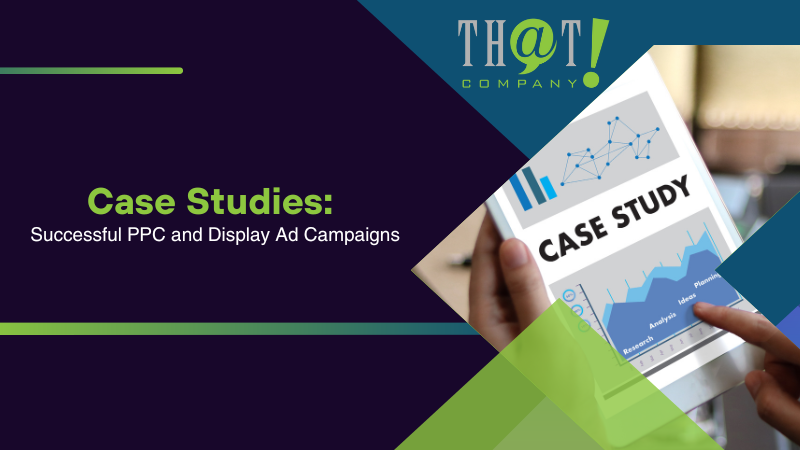
Case Studies: Successful PPC and Display Ad Campaigns
Real-world examples of successful PPC and display ad campaigns provide valuable insights into effective strategies and best practices. These case studies illustrate how targeted approaches can lead to impressive results and significant returns on investment.
Case Study 1: PPC Campaign Success
One notable PPC campaign involved a creative director bidding on the names of target employers, resulting in multiple job interviews for a minimal cost. This innovative strategy showcased the potential of PPC advertising in achieving specific goals with a low budget.
Another example is the Snickers campaign, which utilized misspelled search terms to drive traffic. This approach led to over half a million impressions in just two days, demonstrating the effectiveness of creative targeting in paid search campaigns.
Case Study 2: Display Ad Campaign Success
The Perfume Shop significantly increased brand visibility by placing ads on celebrity videos on YouTube, resulting in over nine million views. This campaign strategy leveraged high-profile placements to capture audience attention and enhance brand perception.
Toagosei America Inc.’s display advertising in email newsletters achieved over 73K website impressions and increased brand awareness. Targeting previously untapped industries, the campaign demonstrated effective targeted audience engagement and expanded the brand’s reach.
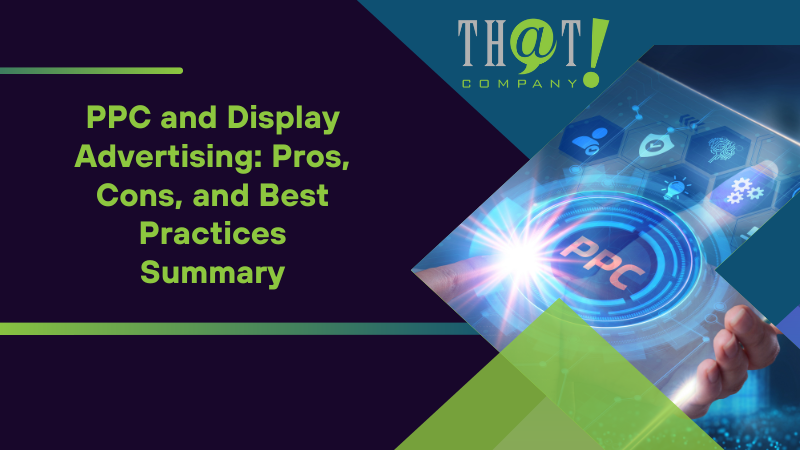
Summary
In conclusion, both PPC and display advertising offer unique advantages that can significantly enhance your digital marketing efforts. By understanding their key differences, aligning your advertising goals, and leveraging best practices, you can create effective campaigns that drive immediate results and build long-term brand recognition.
Whether you choose PPC for quick conversions or display advertising for sustained brand awareness, the key to success lies in continuous measurement, optimization, and adaptation. Embracing AI and automation can streamline your processes and keep you ahead of the competition. A white label partnership can further enhance your advertising strategy, providing scalable solutions that drive better results and long-term growth.

Frequently Asked Questions
What are the main differences between PPC and display advertising?
The main difference lies in their objectives: PPC advertising targets immediate conversions by leveraging search intent, whereas display advertising focuses on long-term brand recognition through engaging visuals. This distinction highlights the strategic approach each method employs in reaching audiences. Businesses can also benefit from white label services to efficiently manage and scale their PPC and display advertising efforts.
How should I allocate my advertising budget between PPC and display ads?
For optimal results in customer acquisition, you should allocate 70%-80% of your advertising budget to PPC and 20%-30% to display ads. This distribution prioritizes immediate returns while still leveraging broader exposure.
What metrics should I track to measure the performance of my PPC campaigns?
To effectively measure the performance of your PPC campaigns, track Quality Score, click-through rate (CTR), conversion rate, and impression share. These metrics provide vital insights into campaign effectiveness and areas for improvement.
How can I effectively use remarketing in my advertising campaigns?
To effectively use remarketing in your advertising campaigns, target users who have previously engaged with your brand by delivering personalized ads that align with their past behavior, thereby enhancing conversion potential. This targeted approach not only fosters brand recall but also increases the likelihood of user re-engagement.
What role does AI play in optimizing ad campaigns?
AI significantly optimizes ad campaigns by automating tasks, refining bid strategies in real-time, and facilitating data-driven decisions, ultimately leading to improved performance.

